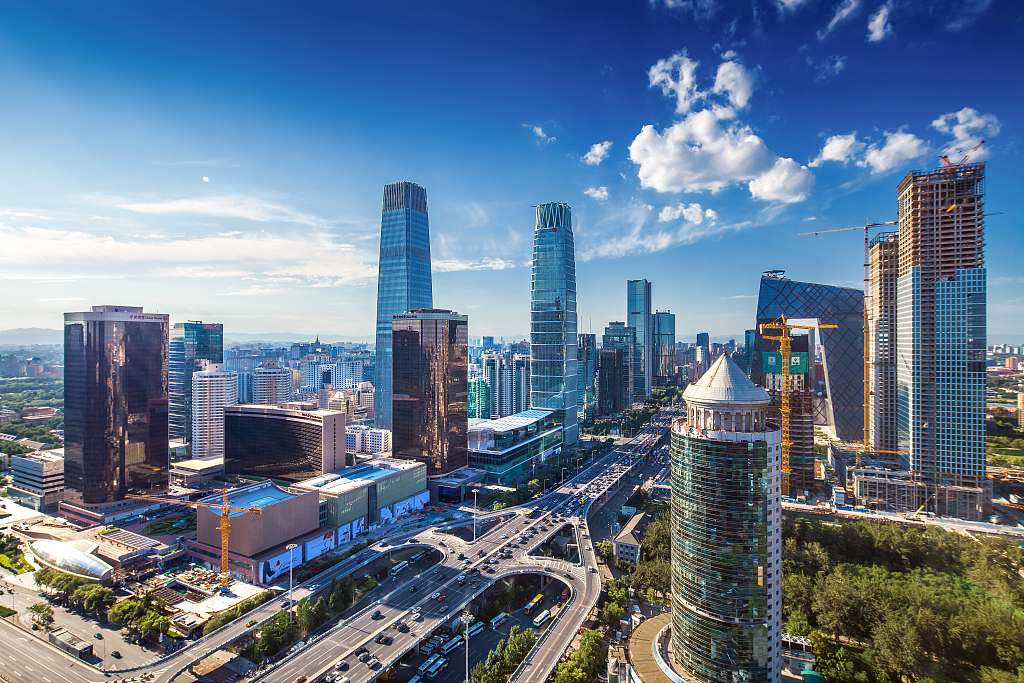China faces economic headwinds, but fundamentals remain strong
By Shujie Yao | chinadaily.com.cn | Updated: 2019-11-26 10:27

China's GDP expanded 6.2 percent in the first three quarters of 2019, showing a declining trend from the first quarter of 6.4 percent and the second quarter of 6.2 percent to the third quarter of 6.0 percent. This growth rate is lowest in more than 20 years, but compared with the global top 10 economies, it is still the highest.
One concern over China's economic performance is whether the declining trend will continue in the last quarter of 2019 and beyond.
Since the US triggered the Sino-US trade war and technology embargo from June 2018, it appears that China has faced a much more hostile external environment. The growth rate of foreign trade dropped sharply from 9.7 percent in 2018 to only 2.4 percent in the first 10 months of 2019. External risks and uncertainties also arise due to the economic slowdown in Europe, Brexit, and the significant weakening of many emerging economies such as Turkey, Argentina, Brazil, South Africa, India and Venezuela. The chaos in Syria and Iran threaten the peace in the Middle East where China depends heavily for its oil imports.
Cross-border foreign direct investment (FDI) contracted by more than 20 percent in the first three quarters of 2019 at the global level. It plummeted by 60 percent and 25 percent respectively to the EU and the US, reflecting a serious deterioration in the world economy, imposing significant pressure on China to expand its international trade and cross-border investment.
Domestically, due to the rising costs of production factors and environmental protection, the Chinese economy is experiencing a significant downward pressure on investment, particularly in the manufacturing sector which is under a major structural shift to move away from low-medium level to medium-high level production. Industrial transformation under the supply-side reform program has produced some remarkable results but it has also imposed significant challenges on the sustainability of a relatively high level of growth, as replacing the old economic drivers with the new ones requires time.

Despite the serious external risks and internal pressures, the Chinese economy has demonstrated strong resilience and vibrant dynamism. Given the absolute size of China's GDP, a 6.2 percent increase can create a new value in any one year equivalent to Saudi Arabia's GDP whose ranking in the world economic league table is about 20. A three years cumulative new value would be greater than the UK's GDP whose world ranking is currently number five. The robustness of China's economy has increasingly depended on its endogenous capability to expand through domestic consumption, investment and technological progress.
A relatively slower growth of China's GDP has accompanied with steady job creation, structure improvement and reduction in urban-rural as well as interregional inequalities. In the first nine months of 2019, China managed to create 10.97 million new jobs, fulfilling 99.7 percent of the annual planned target. Residents' per capita disposable income surged 8.8 percent in nominal terms and 6.1 percent in real terms which is higher than real per capita GDP growth. The urban-rural income gap, measured by the ratio of urban-rural per capita incomes declined by 0.03 to 2.75, the lowest level in two decades. Many less developed inland regions grew more rapidly than their coastal counterparts, accelerating the country's spatial economic convergence process.
In the first three quarters of 2019, China's social fixed assets investment rose 5.4 percent, maintaining the same level as in the previous year. Although this rate of growth is significantly lower than before, the investment structure has improved in favor of high-end manufacturing and the newly emerging industries whose investment growth rate registered an 8.4 percentage points advantage over the national average. Most notably, the growth rates of investment in social services and education are respectively 40 percent and 15.8 percent, signifying China's efforts in promoting the areas that have fallen short of expectation but critical for the general improvement of people's livelihood.
The service sector and private consumption have gradually taken over the dominant role that used to be played by manufacturing and investment, although the latter have been gradually uplifted through quality enhancement and structural change as mentioned previously. The share of the service sector as a proportion of GDP has expanded to more than 54 percent, or over 14 percentage points higher than that of manufacturing, and private consumption is now responsible for over 60 percent of China's GDP.
Quality improvement in the Chinese economy has also been reflected in the change of the national energy mix, where the clean energy share rose by 1.2 percentage points in the first 10 months of 2019. Over the same period, the pollution intensity measured by carbon emission per unit of GDP declined by 2.7 percent. Online sales of consumer goods rose 20.5 percent, accounting for 19.5 percent of the country's total retail sales.
Looking ahead, whether China can maintain a growth of 6 percent or more in the rest of 2019 and 2020 may not be that critical. What really matters is whether it is able to continue its resilience against any external shock and internal challenge on its ambitious plan to upgrade the industrial structure and to create sufficient new jobs for the steady improvement of people's livelihood. The Chinese government has recently launched two major funds worth 351.4 billion yuan in total to accelerate the development of the semi-conductor industry as well as the uplifting and transformation of the manufacturing sector. The government is also determined to eradicate abject poverty measured by the current poverty line equivalent to $1.9 per person per day with sufficient food and clothing as well as guaranteed access to compulsory education, healthcare and housing by the end of 2020.
The year 2020 will be the last year of the 13th Five-Year Plan. If China is able to maintain a growth rate of 6 percent, or even slightly lower than 6 percent in the next five quarters, it will be able to fulfill its five years plan target, setting a solid foundation for further development.
Based on the careful analysis of the statistical data, the pressures and challenges for China to continue a growth rate greater than 6 percent are high. However, the economic fundamentals remain solid for a number of reasons. First, China's ability to rely on endogenous growth is as strong as ever, thanks to its vast territory and immense regional complementarity. Second, state investment in the modern transportation infrastructure such as high-speed rail, information technology such as the 5G network, digital manufacturing, new energies and materials has a huge potential to sustain economic expansion in all localities across the country. Third, continuing structure transformation and industrial upgrading will start to pay off in the years ahead. Fourth, continuing rural-urban migration and the development of the vast rural areas as well as rural-agricultural modernization will continue to create more space for social-economic development.
In short, I am confident that China's economy will be able to sustain its steady growth with quality improvement against the headwind of a tough external and internal environment to fulfill the 13th Five-Years Plan next year and to escape the so-called middle income trap before 2025, which will be a milestone in the country's long march of great rejuvenation toward the middle of this century.
The author is Chueng Kong professor, Dean of Social Sciences Faculty, Chongqing University; special chair professor, University of Nottingham Ningbo China.
The opinions expressed here are those of the writer and do not necessarily represent the views of China Daily and China Daily website.
























